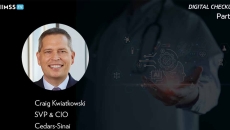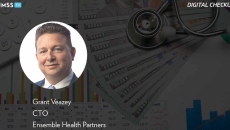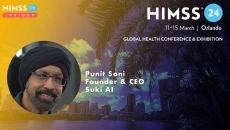Clinical and business intelligence
HIMSS24
David Wolf, MedeAnalytics AVP, and Lynn Carroll, HSBlox COO, highlight value-based care models' crucial components, including contract modeling and performance measurement, and discuss change management for switching to these models.
Hal Wolf, president and CEO of HIMSS, talks about the top learnings from the 2024 HIMSS European Health Conference & Exhibition in Rome and reveals that HIMSS25 Europe will take place 10-12 June 2025 in Paris.
HIMSS24
Dr. Michal Tzuchman Katz, cofounder and CEO of Kahun, discusses how educating doctors on the source of information for the company's clinical knowledge graph and how the product supports patient care encourage its adoption.
The company will use the funds to enter into strategic relationships with life sciences organizations focusing on oncology and specialty care.
CIO Craig Kwiatkowski offers a look at the AI tools deployed at the famous health system and discusses the measure of success of AI initiatives, as well as how the technology can help identify disparities in care access and outcomes.
HIMSS24
According to Dr. Reza Ryan Sadeghian, principal health IT strategist at MITConn Consulting, clinicians must be included in the process of creating new AI tools and in deciding how to deploy them safely and ethically.
Increasing yield and reducing cost to collect are among the reasons hospitals outsource their RCM, says Ensemble Health Partners CTO Grant Veazy.
The health insurance company will expand its use of Cohere's prior authorization platform to include diagnostic imaging and sleep services.
HIMSS24
Patricia MacTaggart, program director and teaching instructor at George Washington University and 2024 Changemaker Award winner, discusses how Medicaid’s innovative use of telehealth as a care modality influenced Medicare and other payers.
HIMSS24
Punit Soni, Suki AI CEO and founder, discusses how his company's integration of its AI assistant with Amwell's Converge telehealth platform to generate clinical notes and coding has reduced doctors' workload by up to 75% and boosted job satisfaction.







